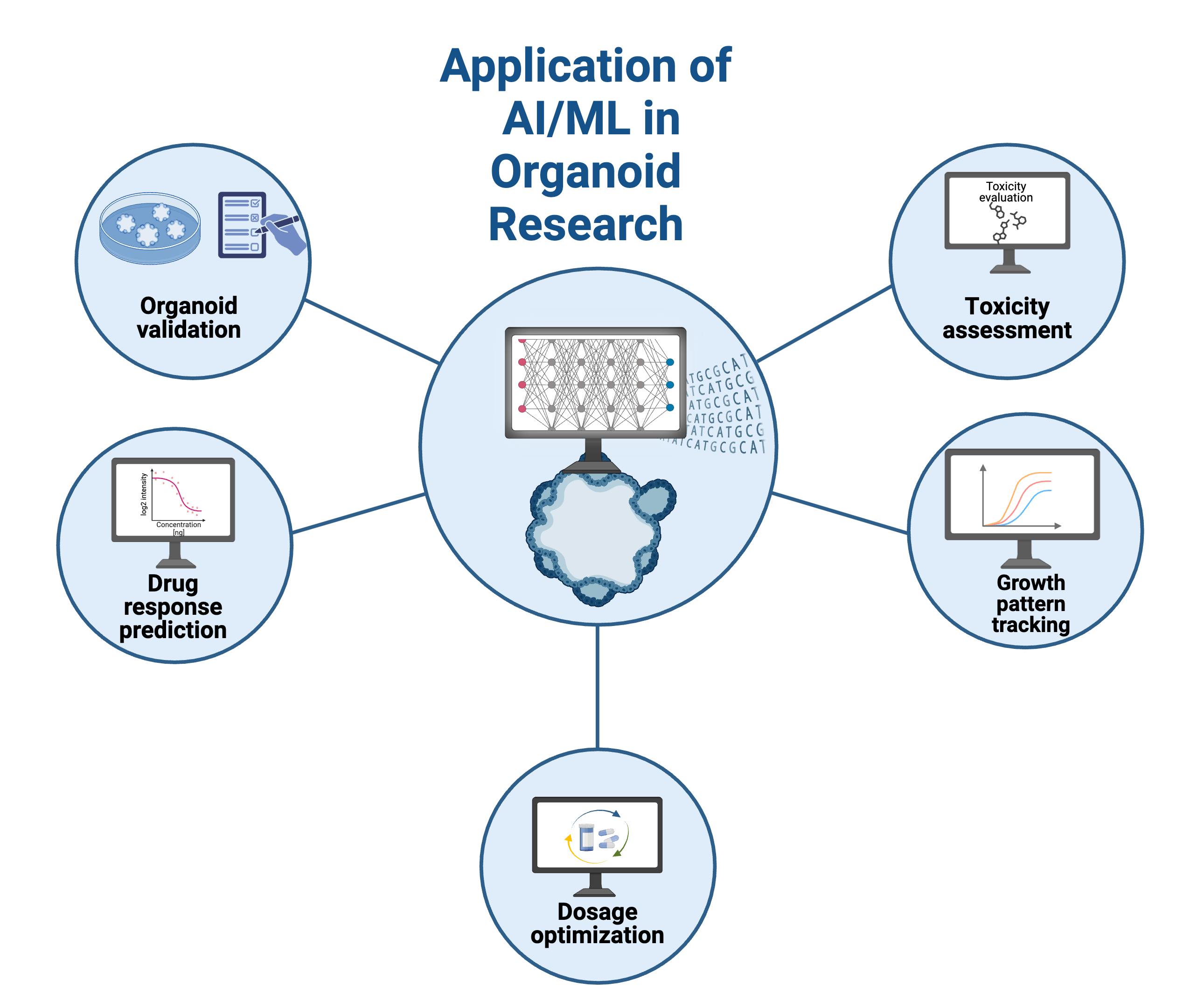AI-Powered Solutions for Organoid Research
Advancing Disease Modeling, Drug Discovery, and Personalized Medicine with Aganitha’s Innovative AI/ML Technologies
Enhance organoid validation, characterization, and drug efficacy prediction
Organoids, 3D cell cultures mimicking the structure and function of human tissues, are transforming drug discovery, disease modeling, and personalized medicine. Aganitha AI/ML solutions for organoids enable model development, validation, disease modeling, drug efficacy testing, and toxicity evaluation.
Challenges in Organoid Research
Organoid research faces several key challenges that hinder progress and efficiency.
Predictive Modeling
Difficulty in building capabilities to predict complex outcomes like drug efficacy and toxicity.
Variability
Ensuring reproducibility and standardization across organoid cultures and experiments.
Time-Intensive Analysis
Novel techniques and softwares available to interpret data are still slow, requiring significant researcher time and attention to minute details
Data Complexity
Organoid studies generate multi-dimensional datasets spanning images, functional data, genomics, transcriptomics and proteomics. Integrating and analyzing these diverse data types from various experimental techniques poses significant challenges.
Aganitha's AI/ML Solutions for Organoid Research
Aganitha provides a suite of AI/ML-driven solutions designed to address the specific needs of organoid researchers:
Solution area
Disease Modeling & Drug Discovery
Predictive Modeling of Disease Progression
- Develops predictive models for disease progression using organoid model data
- Example: Using bright field images of iPSC-based midbrain organoid models of Parkinson’s disease to build predictive models
- AI model trained on imaging data and features like neurite length
- Successfully predicts disease progression
- Aids in understanding disease mechanisms and identifying potential therapeutic targets
Predicting Drug Efficacy and Resistance
- Models trained on organoid imaging, transcriptomic, and proteomic data of treated and untreated patient organoids
- Predicts drug efficacy and identifies potential resistance mechanisms
- Focuses on pathway networks relevant to the drug target
- Provides insights into treatment strategy effectiveness
Developing Toxicity Evaluation models on Organoid data
Treating organoid co-culture models to obtain complex cell interactions data, models developed can
- Use brightfield imaging of organoids to assess toxicity
- Allow for more accurate assessment of potential adverse effects such as Predict bispecific antibody derived intestinal toxicity
- Evaluate potential toxicity of drug candidates
Solution Area
AI as research collaborator (ARC™) in your organoid studies
Leverage the power of LLM to accelerate your organoid research. Learn more about ARC™.
ARC™ is an AI-powered tool designed to simplify data analysis.
The conversational interface lets researchers interact with their data, generate visualizations, and gain insights without extensive programming knowledge.
The Omics Bot supports public and private data sources, making it a versatile tool for organoid research.
Outcomes
Benefits of Aganitha's AI/ML Solutions
Validating Your Organoid Models with Precision
Our machine learning models help you validate your in vitro organoids for differentiation. For instance, you can identify cell types, and reveal gene expression patterns in brain organoids, ensuring your models accurately represent human organs.
Effortlessly Track and Characterize Your Organoids
Uncover Subtle Morphological Changes
Streamlining Your Drug Discovery Process
Our AI/ML tools empower you to assess drug toxicities, predict drug responses, and identify new therapeutic targets based on omics data. You can predict tumor organoid drug-resistance, neurotoxicity in brain organoids and identify biomarkers for drug response.
Discover our offerings across the biopharma value chain
Our Solutions
Our Services
Offering services in computational sciences and technology to complement biopharma R&D
